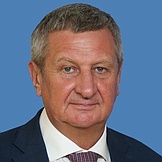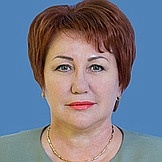Regional flags and emblems


Profile
Established 6 February 1943
Capital Kurgan
The Kurgan Region is part of the Ural Federal District
Area 71,500 sq km
Population 744 200 (2025)
Ethnic groups
(2020 National Census, %)
Russian – 93,40
Tatar – 1,70
Kazakh – 1,21
Bashkir – 1,18
Other – 2,51
Administrative divisions (2024)
Municipal districts – 24
City districts – 2
Geography and climate
The Kurgan Region is located were Urals and Siberia meet: at the southwestern part of the West Siberian Plain, in the Tobol and Iset river basins. The terrain is flat with many depressions and plateaus.
At its widest points, the region is 430 km from west to east 290 km from north to south.
The region borders the Chelyabinsk, Sverdlovsk and Tyumen regions, as well as Kazakhstan.
It has 106 rivers and over 2,000 lakes, including several resorts (Gorkoye and Medvezhye lakes). The Tobol and Iset are the main rivers.
The region has a continental climate. It is bordered by the Ural Mountains in the west, but completely open from the north and weakly protected from the south, so that both cold Arctic air and dry hot air from Kazakhstani steppes move into the region freely, which provides for unstable weather conditions. The climate is also affected by continental air from the middle latitudes from Eastern Siberia.
The average temperature in January is –18°C and +20,6°C in July. The average precipitation level is 3 mm in January and 67 mm in July.
The region is home to 21 state nature sanctuaries and 102 natural monuments.
Government
The legislative branch is the Kurgan Region Duma, which is the permanent, representative and only body of legislative authority in the region.
The Kurgan Region Duma has 34 deputies elected for five years, with 17 of them running in single-number constituencies and the other 17 in the single electoral district, where the winners are identified in proportion to the number of votes cast for lists of candidates by electoral associations.
The current Kurgan Region Duma was elected on September 2020. The term expires in September 2025.
The executive branch in the Kurgan Region is represented by the Governor of the Kurgan Region, the Government of the Kurgan Region, and bodies of executive authority of the Kurgan Region. The Government of the Kurgan Region is a collegial and permanent supreme body of executive authority in the region.
The Governor of the Kurgan Region is the region’s highest-ranking official, who forms and heads the Government of the Kurgan Region – the supreme body of executive authority in the region. He is elected for five years by Russian citizens who permanently reside in the region. The term of the incumbent Governor expires in September 2029.
Economy and natural resources
Industry is the base of the Kurgan Region’s economy at almost 30% of the gross regional product. Manufacturing (over 80%) and electricity (13%) have the largest share in the industrial production sector.
Machine building and metal processing companies produce almost half of the region’s industrial products. There are also pharmaceutical, food processing, construction materials and other companies in the region.
Kurganmashzavod, Kurganstalmost, KAVZ, Shadrinsk Automotive Components Factory, Kurgankhimmash, Kurganpribor, Dalur and AK Sintez are the region’s largest companies. Kurgan Region companies’ products are sent to all Russian regions and dozens of countries across the world.
There are iron ore, wolfram and molybdenum deposits as well as raw materials for the construction industry, mineral waters and therapeutic muds. The Kurgan Region is also a source of uranium.
The agro-industrial sector is important for the region (about 10% of the gross regional product). The Kurgan Region fully meets its own demand for food and exports agricultural products to many Russian regions and abroad.
Farms occupy over 60% of the region’s area. They grow cereals, legumes, potatoes and vegetables. Livestock breeding specializes in cattle, pigs, sheep and poultry.
The railway, highways, aviation and pipelines are well-developed in the region. The electrified Trans-Siberian Railway runs through the region. Transport services account for more then 9% of the gross regional product.
The Kurgan Region has economic ties with over 50 counties. Exports account for over 70% of foreign trade. The region exports machines, equipment, transport equipment, metals and metal products as well as chemical products and foodstuffs.
Culture and tourism
The Kurgan Region has 1,350 cultural and art organizations.
The region has rich theatrical traditions. Shadrinsk Drama Theatre, which is over a century old, has proven to be one of the best Urals and Siberian theatres, and the Kurgan Drama Theatre has participated in many international and Russian theatre festivals.
The Trans-Ural musical culture is mostly connected with the regional philharmonic hall and Shostakovich Music College.
The Kurgan Region hosts national and international events such as the Russian Watercolour Exhibition, the Friend Accordion National Contest, the Shostakovich International Music Festival and the Dreaming About Flight International Puppet Theatre Festival.
The region has many museums and carefully maintains its historical landmarks. Many Decembrists went into exile here. They have been commemorated in the house museums that belonged to Wilhelm Kuchelbecker, member of the Mikhail Naryskin Northern Society and the Finland Regiment’s Guard, Lieutenant Andrei Rozen.
The Kurgan Region has significant potential for tourism development. Cultural, educational, orthodox, health, environmental, hunting, fishing and agricultural tourism are developing in the region.
The Kurgan Region has many orthodox landmarks. Tourist routes include the Church of the Transfiguration of the Saviour, the first stone building in the Trans-Urals built in the 18th century. The first spiritual center in the area, the Assumption Monastery, played an important role in the region’s development.
The Kurgan Region has excellent nature for health resorts and rehabilitation. There are over 3,000 lakes, with a quarter having therapeutic properties. Several lakes match the best Russian and international health resorts in their mineralogical conditions. Pine Grove and Medvezhye Lake resorts are considered the best mud and balneal resorts.
The Kurgan Region is proud of the Ilizarov Russian Scientific Centre for Restorative Traumatology and Orthopedics, which is a large world-class medical center.


